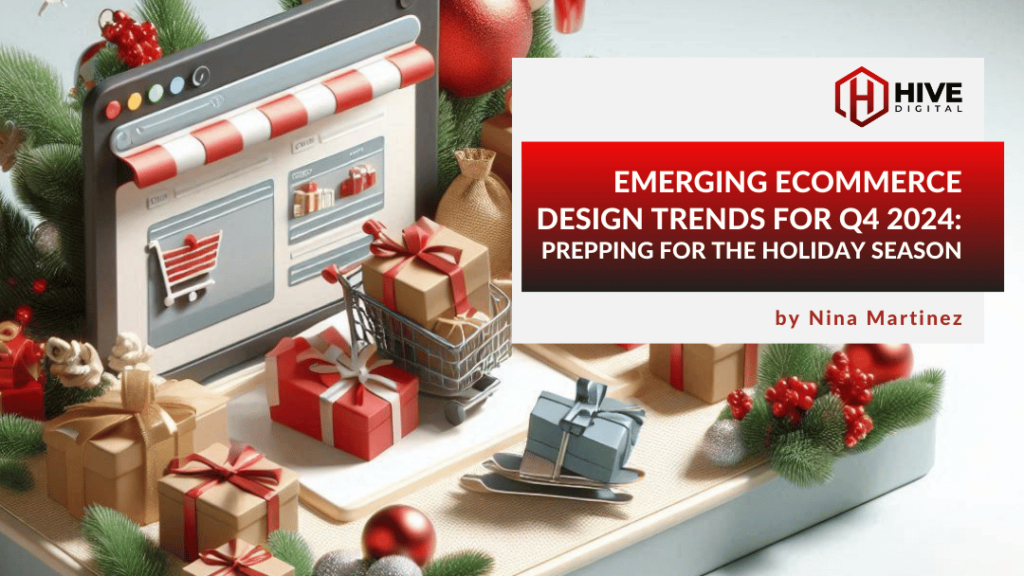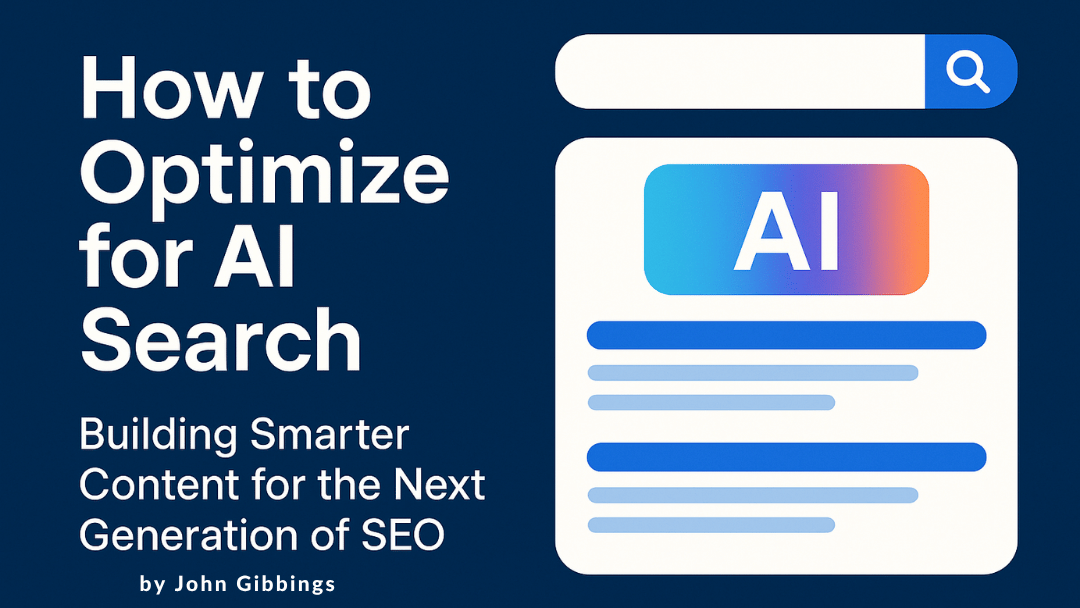As we prepare to enter Q4 of 2024, ecommerce businesses are gearing up for the holiday shopping season—a critical time for conversions, sales, and customer engagement. The design landscape is evolving rapidly, blending cutting-edge aesthetics with functionality, and aimed at boosting conversion rates while delivering a seamless user experience (UX). In this post, we’ll explore the key design trends shaping ecommerce, potential design elements to test for conversion rate optimization (CRO) and UX, and the KPIs you should track to measure success:
1. AI-Powered Personalization
Personalization has moved beyond simply recommending products based on past behavior. AI now enables ecommerce websites to offer hyper-targeted content, personalized landing pages, and dynamic product suggestions based on real-time interactions.
CRO/UX Testing Ideas:
- Dynamic Homepages: Test personalized content on the homepage based on user segmentation (e.g., returning customers, first-time visitors).
- AI Chatbots: Experiment with intelligent chatbots that assist shoppers, guiding them to relevant products.
Recommended KPIs:
- Conversion Rate (CR)
- Average Order Value (AOV)
- Customer Lifetime Value (CLTV)
2. Immersive Visuals and 3D Product Models
Shoppers increasingly expect a tactile experience even in a digital environment. High-quality images, 360-degree views, and 3D product models can provide an engaging, “in-store” feeling.
CRO/UX Testing Ideas:
- 3D Product Views: Test 3D product models or interactive zoom features.
- Virtual Try-On Experiences: For fashion or beauty, explore AR-driven try-on features.
Recommended KPIs:
- Time on Page
- Cart Abandonment Rate
- Bounce Rate
3. Minimalistic, Bold Typography
Bold typography is becoming the hero in minimalist designs. Large fonts with clean lines can make headlines, CTAs, and essential product information stand out, improving scannability and driving conversions.
CRO/UX Testing Ideas:
- Hero Section Headline Sizes: Test oversized, bold typography in key areas like headers and CTA buttons.
- Text Contrast and Color: Explore high-contrast color schemes for CTAs to improve visibility.
Recommended KPIs:
- Click-Through Rate (CTR)
- Heatmap Interaction Data
- Conversion Rate on CTA Buttons
4. Mobile-First Animations & Micro-Interactions
Animations and micro-interactions are no longer reserved for desktop experiences. With more users shopping on mobile, subtle, performance-optimized animations can elevate UX, encouraging users to explore further or complete actions like adding to cart.
CRO/UX Testing Ideas:
- Scroll Animations: Implement and test parallax scrolling or subtle loading animations on mobile to enhance engagement.
- Micro-Interactions: Try adding feedback effects (e.g., color changes or small animations) on hover or click, especially for buttons and CTAs.
Recommended KPIs:
- Mobile Conversion Rate
- Scroll Depth
- Interaction Completion Rate
5. Sustainability-Focused Design
Eco-conscious design that highlights sustainability efforts is gaining traction, especially with Gen Z shoppers. Websites are using earth-tone color palettes, eco-friendly messaging, and transparent packaging info to resonate with this audience.
CRO/UX Testing Ideas:
- Sustainability Messaging on Product Pages: Test including sustainability certifications, carbon footprint info, or recycled packaging details.
- Eco-Themed Visual Design: Experiment with nature-inspired themes, green color palettes, or videos showcasing sustainability efforts.
Recommended KPIs:
- Engagement on Eco-Focused Content
- Product Page Conversion Rate
- Return Customer Rate
6. Voice Search Optimization & Accessibility Features
Voice search is becoming a significant player in ecommerce, with more shoppers using smart speakers or voice assistants to browse and shop. Simultaneously, improving accessibility through intuitive design features will help cater to a broader audience.
CRO/UX Testing Ideas:
- Voice Search Usability: Test voice-search features to see if they improve product discovery for your audience.
- Accessibility Enhancements: Evaluate changes like high-contrast mode, text-to-speech, or keyboard navigation usability.
Recommended KPIs:
- Search Conversion Rate
- Exit Rate from Search
- Accessibility Tool Usage
7. One-Page Checkout Experiences
Shoppers expect fast, hassle-free checkout experiences. Simplified, one-page checkouts are becoming increasingly popular as they streamline the process, reducing friction and drop-offs.
CRO/UX Testing Ideas:
- One-Page Checkout vs. Multi-Step: Test a one-page checkout process against a traditional multi-step checkout to assess completion rates.
- Payment Method Display: Explore different ways of displaying payment methods, prioritizing mobile wallet options like Apple Pay or Google Pay.
Recommended KPIs:
- Checkout Conversion Rate
- Cart Abandonment Rate
- Payment Completion Time
Measuring Success with CRO/UX Tests: Key KPIs
For each of these design trends, tracking the right KPIs is crucial to understanding the impact on user behavior and conversions. Here are some key KPIs to measure when running CRO and UX tests:
- Conversion Rate (CR): The primary metric to track for any ecommerce site. This shows the percentage of users who complete a desired action, whether it’s a purchase, sign-up, or download.
- Cart Abandonment Rate: Essential for understanding where users drop off in the buying process. Lowering this can directly lead to more sales.
- Time on Page & Bounce Rate: These indicate how well users are engaging with your content or if they’re leaving quickly, which could signal design and/or usability issues.
- Click-Through Rate (CTR): Measures the effectiveness of your CTAs and interactive elements.
- Average Order Value (AOV): A valuable metric to track if you’re testing upsells, cross-sells, or other elements designed to increase the value of each transaction.
- Heatmaps & Session Recordings: Tools like Microsoft Clarity, Hotjar, or Crazy Egg can offer insights into how users are interacting with new design elements. This data complements your quantitative metrics, giving you a complete picture of user behavior.
Key Takeaways
In Q3 of 2024, ecommerce design is all about combining aesthetics with performance—creating a personalized, engaging, and seamless shopping experience. By staying on top of these emerging trends and strategically testing new design elements, you’ll be ready to optimize your site for the upcoming holiday shopping season. Remember, the success of these experiments hinges on tracking the right KPIs, ensuring you can make data-driven decisions that improve both UX and conversions.
If you’re interested in learning more about these tactics and/or how they can be applied to your digital strategy, feel free to connect with our team for your free consultation.
Happy testing and good luck this holiday season!










